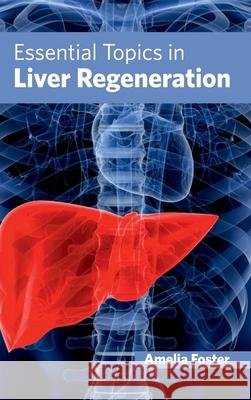Essential Topics in Liver Regeneration » książka
Essential Topics in Liver Regeneration
ISBN-13: 9781632421821 / Angielski / Twarda / 2015 / 266 str.
This book intends to provide detailed information regarding essential topics in liver regeneration. Doctors and scientists have been familiar with the phenomenon of liver regeneration ever since the tale of Prometheus' punishment in ancient Greek mythology. However, true insight into its complex mechanisms has only become available in the 20th century. Consequently, the pathways and mechanisms involved in regeneration of the liver to its normal function after injury have been well described and characterized, from the hepatic stem/progenitor cell activation and expansion to the more systemic mechanisms involving other tissues and organs like bone-marrow progenitor cell mobilization. This book discusses some of the intricate mechanisms involved in liver regeneration and provides instances of latest strategies adopted to induce liver regeneration, both in clinic and laboratory. The information provided will be beneficial not only to professionals engaged in this field, but also to practitioners in other areas of science such as pharmacology, toxicology, etc. who are interested in updating their knowledge regarding the underlying biology that revolves around liver injury and regeneration.
This book intends to provide detailed information regarding essential topics in liver regeneration. Doctors and scientists have been familiar with the phenomenon of liver regeneration ever since the tale of Prometheus punishment in ancient Greek mythology. However, true insight into its complex mechanisms has only become available in the 20th century. Consequently, the pathways and mechanisms involved in regeneration of the liver to its normal function after injury have been well described and characterized, from the hepatic stem/progenitor cell activation and expansion to the more systemic mechanisms involving other tissues and organs like bone-marrow progenitor cell mobilization. This book discusses some of the intricate mechanisms involved in liver regeneration and provides instances of latest strategies adopted to induce liver regeneration, both in clinic and laboratory. The information provided will be beneficial not only to professionals engaged in this field, but also to practitioners in other areas of science such as pharmacology, toxicology, etc. who are interested in updating their knowledge regarding the underlying biology that revolves around liver injury and regeneration.











